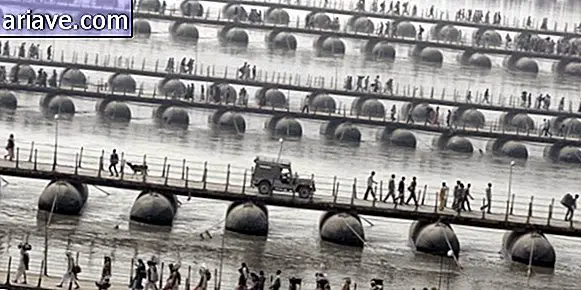Pedra da Vela: the beautiful and curious rock formation in the Black Sea
Russia, the largest country in the world, is also full of curious natural beauty. Long ago we talked about the Manpupuner, a set of 7 impressive monoliths that are known as the “Russian Stonehenge”. Now we bring another rock formation from there: the Candle Rock, or the Parus Rock.
This lonely structure is on the Black Sea, 17 km southeast of Gelezhik - and over 1, 500 km south of Moscow. It reigns alone by the beach and draws attention by its shape: looking like the sail of a ship, the formation is 30 meters high, 20 meters long and just over 1 meter wide!

As it is in contact with the sea, it is natural that at some point the Sailing Stone will collapse. Since 1971, however, it has been considered a natural monument and has received preservation incentives. Some analysis shows that what we see today is what is left of the stone, since in more remote ages it advanced much further into the sea.
A hole in the rock complements the structure, but no one knows exactly if it was made naturally or through human action. During the Caucasus War, between 1817 and 1864, it is believed to have been used as a kind of natural shield. The hole could have been made to facilitate attacks. This version, however, is put in check, as the rock is difficult to drill.
Check out photos of the monolith:
The Pedra da Vela is practically perpendicular to the ground.

Hole 2.5 meters from ground has uncertain origin

Pedra da Vela stands out on the beach

The most beautiful way to get there is by boat, but a road also gives access to the monument.

Monolith served as a shield during the Caucasus War

It's 30 meters high!

***
Do you know the Mega Curioso newsletter? Weekly, we produce exclusive content for lovers of the biggest curiosities and bizarres of this big world! Register your email and do not miss this way to keep in touch!











